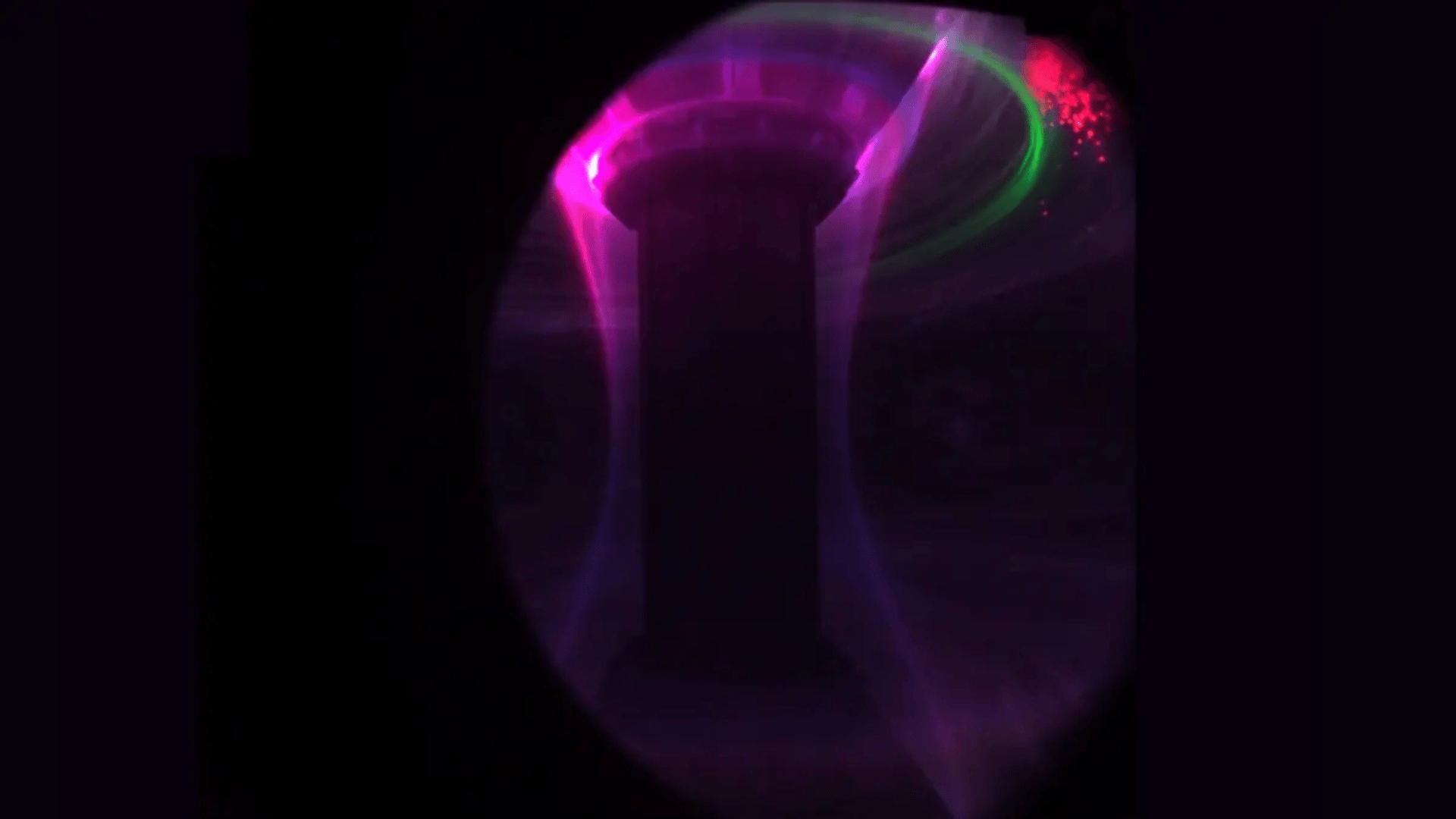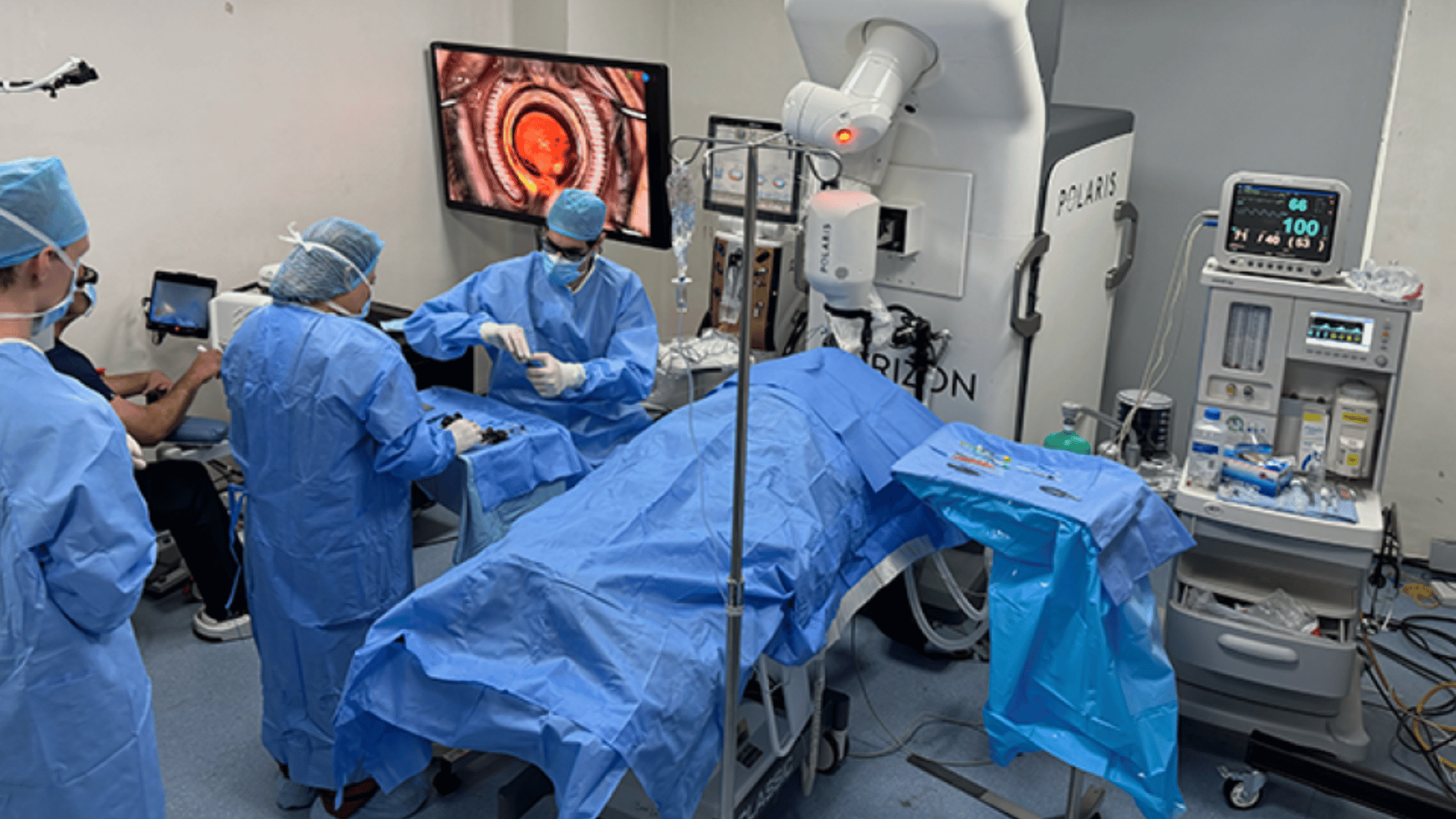Tokamak Energy has released the first high-speed color images of plasma from inside a fusion energy machine. This provides new visual insights into the behavior of the “captured star” and is a crucial step toward harnessing fusion as a clean energy source.
Camera Captures Images Inside Fusion Energy Machine

“Current experiments on our ST40 spherical tokamak are offering new visual insights into plasma behaviour, thanks to a high-speed colour camera capturing footage at 16,000 frames per second,” said the firm.
According to Interesting Engineering, the new camera allows researchers to visually track materials interacting within the plasma, which reaches temperatures of tens of millions of degrees. The footage showcases the process of fueling and controlling the plasma.
The injection of deuterium gas causes a bright pink glow that’s visible to the camera. Researchers are also seen dropping lithium granules into the plasma, which are the size of sand grains. Though they emit a red light as they enter the cooler outer regions, they glow a greenish-yellow color as they enter the hotter core.
The new camera is proving to be a vital diagnostic tool, producing images that help researchers visually confirm more detailed data gathered by spectroscopy (analyzing light wavelengths).
“The colour camera is especially helpful for experiments like these,” said physicist Laura Zhang. “It helps us immediately identify whether the gaseous impurities we’re introducing are radiating at the expected place, and whether lithium powders are penetrating to the plasma core.”
This research supports the development of X-point radiator (XPR) regimes, a potential operating mode for future fusion power plants. XPR regimes aim to cool the plasma’s edge before it hits reactor components, reducing wear and tear without compromising performance.
The ability to now see how lithium interacts with the plasma in real-time is a significant step toward advancing this critical enabling technology. The experiments are part of a $52 million upgrade program for the ST40, the world’s highest-field spherical tokamak.
“By incorporating lithium into ST40, the world’s highest field spherical tokamak, we will enhance our understanding of this critical enabling technology,” stated the company.







